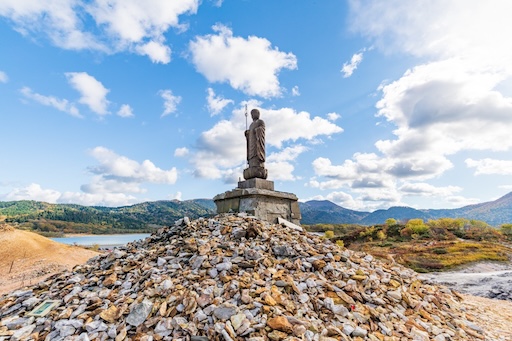
Welcome to a place where the line between the living and the dead feels paper-thin. A place where mist clings to the rocky earth, the air stings with sulfur, and volcanic vents hiss like whispers from beneath the ground. This is Mount Osorezan, often translated as the “Mountain of Fear,” one of Japan’s most spiritual—and strangest—destinations.
Located on the remote Shimokita Peninsula in Aomori Prefecture, Osorezan is more than just a volcano. It’s a sacred site steeped in Buddhist legend, believed by many to be the gateway to the afterlife. Pilgrims travel here not for views, but for communion—with spirits, with ancestors, and with the quiet unknown.
What Makes Osorezan So Unusual?
At first glance, Osorezan doesn’t look like a place of peace. The ground is cracked and scarred, spewing sulfur gases. The landscape is colored with streaks of yellow, white, and gray. Small wooden markers and stone statues of children are scattered across the barren terrain, dressed in colorful pinwheels and tiny hats.
And then there’s the smell—the heavy stench of sulfur—that hits you like a punch in the face. It’s otherworldly. But that’s exactly the point. Osorezan is meant to feel like a borderland between this world and the next.

The Gate to the Afterlife
In Japanese Buddhist tradition, Osorezan is one of the three most sacred mountains in the country. It’s believed to sit atop the entrance to Jigoku (hell) and to serve as a passageway to the other world. According to folklore, the nearby Sanzu River is the equivalent of the River Styx—a spiritual barrier that souls must cross after death.
The rocks by the river are stacked by grieving parents, representing the efforts of their deceased children to build bridges to the afterlife. Visitors often leave toys, flowers, or pinwheels for these wandering souls. It's haunting and deeply moving all at once.
The Mist That Never Lifts
One of the most mysterious aspects of Osorezan is its eternal sulfur mist. Due to constant volcanic activity, clouds of hot gas hang low over the area year-round. The fog is thickest in the morning and after rain—when it rolls through the valley, it cloaks everything in a ghostly veil.
The mist is not just a visual effect. It shapes the entire atmosphere of the place. It deadens sound. It blurs vision. And it makes you feel like you’re walking through a dream—or perhaps someone else’s memory.
Bodaiji Temple – The Spiritual Core
At the heart of Mount Osorezan lies Bodaiji Temple, founded over 1,000 years ago. Despite the desolate environment, the temple itself is tranquil, even beautiful. Here, monks hold memorial services for the dead and offer spiritual guidance to visitors seeking peace, answers, or closure.
During the annual Osorezan Taisai Festival in summer, spiritual mediums known as itako gather to “channel” the spirits of the deceased. Whether you believe in the supernatural or not, the experience is undeniably powerful—and uniquely Japanese.
When to Visit
- Late Spring to Early Autumn (May–October): This is when the temple is open and the weather allows easier access.
- Best time: July, during the Osorezan Taisai Festival, when the spiritual energy is said to be at its peak.
- Avoid winter: The area is often inaccessible due to heavy snow and dangerous road conditions.
How to Get There
- From Tokyo: Take the Tohoku Shinkansen to Hachinohe or Aomori, then transfer to local trains and buses toward Mutsu City.
- By car: A scenic and eerie drive into the peninsula. Make sure your tank is full—services are limited.
Travel Tips
- Be respectful. This is a sacred place, not a tourist attraction.
- Prepare for strong sulfur smells and bring a mask if you're sensitive.
- Silence speaks louder here—let the landscape do the talking.
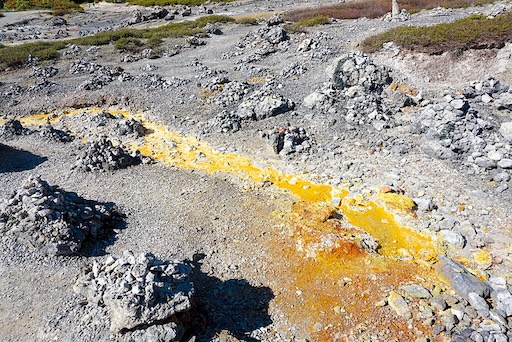
A Place Like No Other
Mount Osorezan isn’t pretty in the conventional sense. It doesn’t boast lush forests or snowcapped peaks. Instead, it offers something much rarer—a raw, honest conversation with death, memory, and meaning. It's a place where time slows down, where the veil feels thin, and where silence has weight.
It may be called the “Mountain of Fear,” but for many who visit, it becomes a place of healing. A final frontier. A hidden wonder that doesn’t shout—but hums softly through the mist.
Share this story and inspire others.
Tags: Japan, Mount Osorezan, Aomori, Sulfur Mist, Buddhist Legends, Spiritual Travel, Offbeat Japan, Haunted Places, Chasing Hidden Wonder, Mysterious Locations, Sanzu River, Japanese Folklore
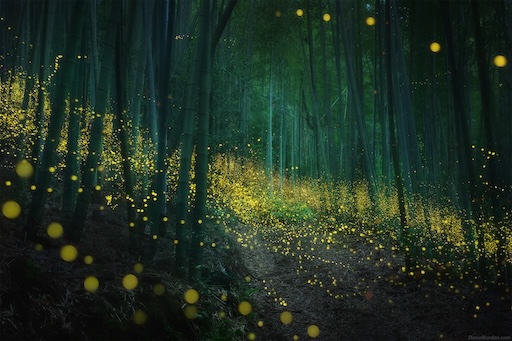 Firefly Phenomenon (Hotaru Season) – Magical Nights in Japan
Firefly Phenomenon (Hotaru Season) – Magical Nights in Japan
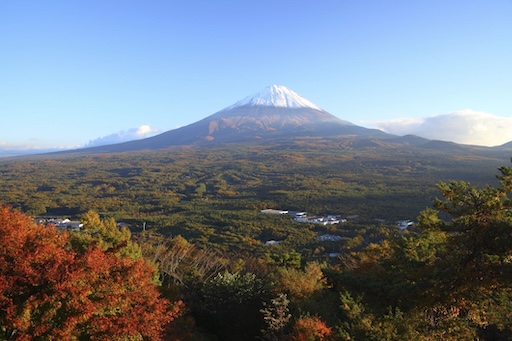 Aokigahara Forest – The Magnetic Silence of Mount Fuji’s Lava Woods
Aokigahara Forest – The Magnetic Silence of Mount Fuji’s Lava Woods
 The Sacred Corn Festivals – When Maize Becomes a God
The Sacred Corn Festivals – When Maize Becomes a God
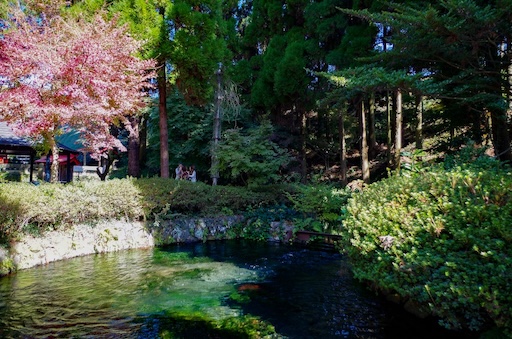 Shirakawa Suigen – Kumamoto
Shirakawa Suigen – Kumamoto
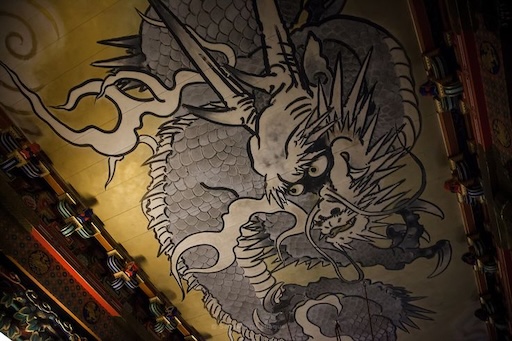 Nikko’s Crying Dragon – Tochigi
Nikko’s Crying Dragon – Tochigi
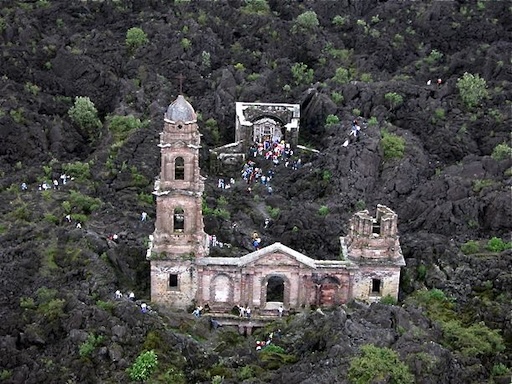 Paricutín Volcano – The Volcano That Was Born in a Cornfield
Paricutín Volcano – The Volcano That Was Born in a Cornfield
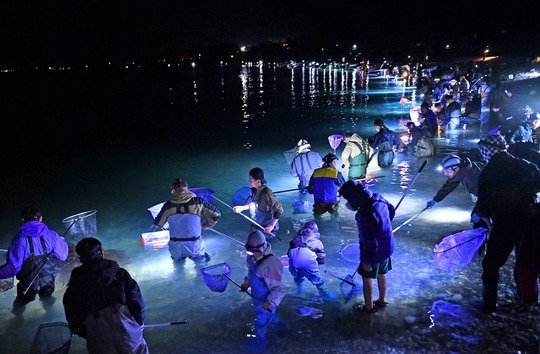 Bioluminescent Firefly Squid (Hotaru Ika) – Toyama Bay
Bioluminescent Firefly Squid (Hotaru Ika) – Toyama Bay